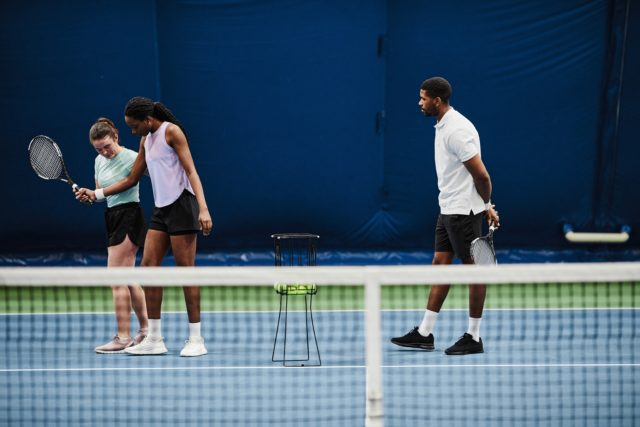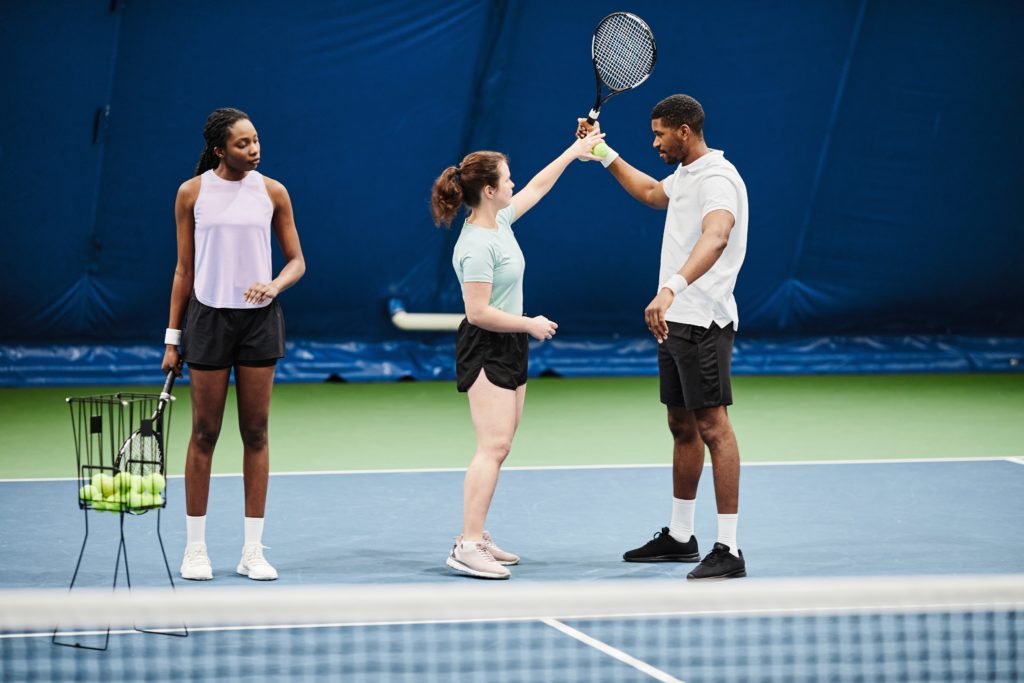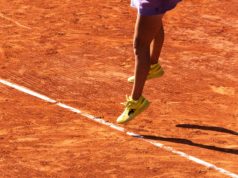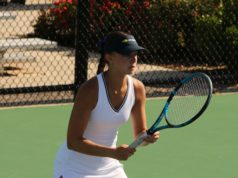By Ken DeHart, USPTA Master Professional and PTR Master Professional, ARA Individual Member
Tennis is like any other ball sport; there are three basic skills. All ball skills involve using the same skills used by athletes in every other sport; catch = volley, toss = ground stroke, and throw = serve. The tactical, movement, and mental skills are the glue that make them all work in competition.
Be specific in your pre-match warm up
Go through the actual movements you will use in playing a match in your pre-match warm-up. Awaken the muscles and movement you will actually use as you play the game, in your warm-up. Not only will you activate your body to perform these movements and motions, but you can also do it without the interference of the receiving and sending of the ball. Going through the strokes and movement in front of a mirror, or even a sliding glass door, creates a mental and physical neural pathway to perform with less thought. If you have good technique, you can close your eyes to practice your swings and your muscles will perform exactly as the picture in your mind.
Begin with the spin
Before starting to warm up, rules say you must determine how you will begin the match by the spin of the racquet.
- If you win and choose to serve, you should spend more time practicing your serve.
- The first receiver will serve but should spend more time returning the opponent’s warm-up serve, as that is what they do to start the match.
- In doubles, the first server should spend more time preparing their serve while the opponent who serves next will also focus more on serve preparation.
- The third server will take more overheads as a serve warm-up but also return several serves as they will play two games before serving.
- The fourth server will take several overheads and a few serves but focus mostly on practicing returning the other team players serves as he will play three games before serving.
The no topspin zone
Once on the court and the typical short court warm-up begins, use under spin to warm up. From this part of the court, you typically will be hitting a volley, drop shot, or underspin approach shot. Most players practice abbreviated topspin swings that do not translate to how they will actually hit during the match from that part of the court. As you move back, go to three quarter court and continue to use some underspin but begin to introduce topspin as well. Once on the baseline, you are free to use either as you may be attacking or defending from that part of the court, even under-spinning a first serve return.
It is important in the warm-up to warm up your eyes and footwork as they will determine the quality of your shots in the match. Tips could include:
- Trying to average 6-8 steps between shots, even from the service line.
- “Yes or No,” saying it to yourself as “Yes,” I saw the ball spin before I hit it or “No,” I did not see the ball spin before I contacted the ball.
- Your eyes will tell you where and when to move to the ball and when to swing. That is why it is called “eye-hand coordination” vs “hand-eye coordination.”
Targets — big targets
Servers typically have three targets: A=alley, B=body, C=center. Serve into the receiver’s body to limit extension on the return motion. This can force the receiver to move away from the ball to return early in the serve game. You don’t have to serve aces at the beginning of the match. Make the receiver play the ball and eliminate the pressure of having to make a great second serve. At that point, the receiver knows they have to get the ball in play. When you have a game or set point, don’t go for the ace, the first serve puts all the pressure on the receiver — they miss it and they lose.
Receivers have five targets in singles and three in doubles.
- Singles receiving, like the server, you start with a target for the return, even before they serve to you. Big target, right back at the server, where they are most off balance recovering from their serve motion.
- The other targets are the four “squares” on the opponent’s court, short angle return to the deuce service court, deep to the square behind the deuce service court, deep to the square behind the add service court, or short to the add court.
Tennis is a target sport. Make sure you start with a target in mind and then adjust as needed. Each player or coach has routines or game plans that work for them. Switching your game plan can allow you to adjust for each type of opponent or how you are playing on that particular day.





